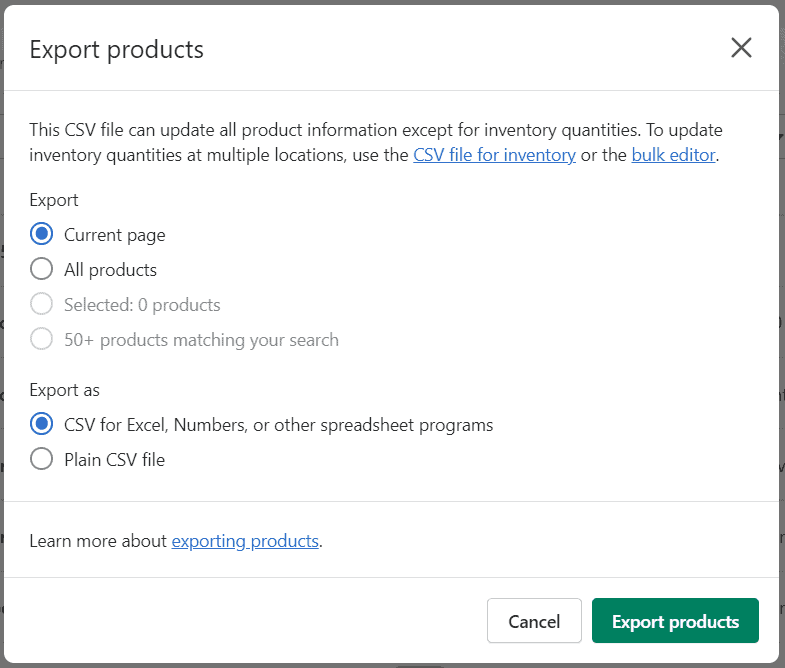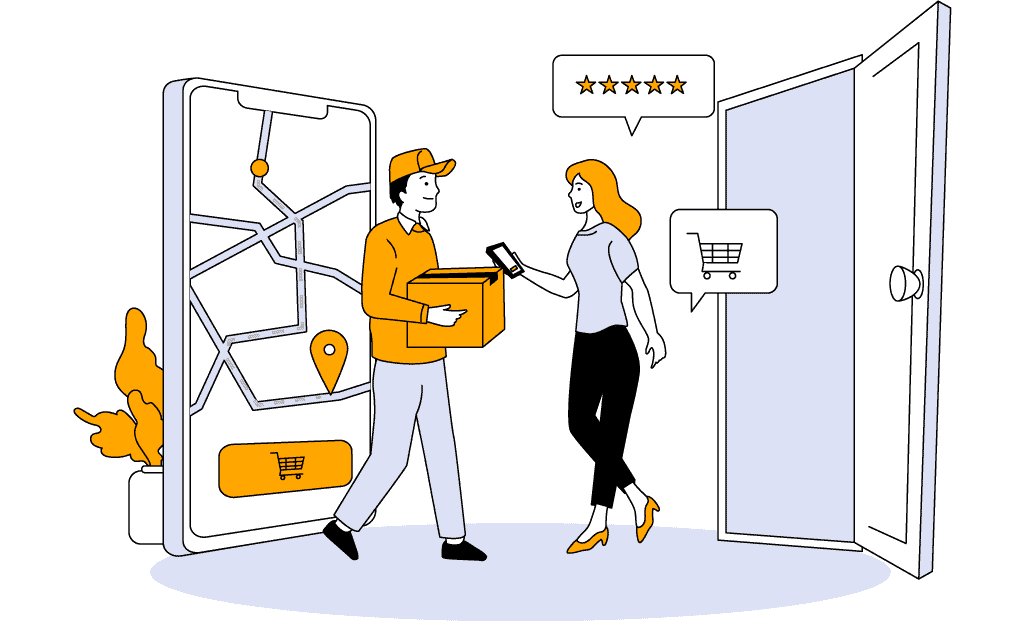So you just started a dropshipping store and have a supplier in mind, but you're unsure how to connect your store to your supplier?
In this article, we will go through it!
So, without further ado, let's get straight into it!
3 Methods to connect your store to a dropshipping supplier
Suppliers will generally let you know how they connect to your ecommerce platform.
Here are the most common methods:
1. Using supplier integrations
The easiest way to connect dropshipping suppliers to your store is using native integration.
Dropshipping supplier platforms such as Spocket and CJdropshipping have integrations with ecommerce platforms such as Shopify, BigCommerce, WooCommerce, and others:

This makes things super easy because all you have to do is install an app.
It allows you to seamlessly and automatically send and manage orders between your ecommerce platform and your supplier.
If you're using AliExpress, you can also use this connection method with an integration platform such as DSers or Spocket's AliExpress integration software called AliScraper.
Now, we'll show you how this works.
We will use Spocket and Shopify as an example.
However, you can use any supplier with integration capabilities to an ecommerce platform.
The setup process may be a bit different, but you should find more information on the supplier's website.
To begin, head over to your ecommerce platform, in our case Shopify.
For Shopify, most supplier connections happen using apps from the Shopify App Store, which is the case for Spocket too:

You can type 'Spocket' into the search bar and see the Spocket app pop up. After clicking on it, you should see a page like this, and you want to click 'add app':

Then, you want to go to your supplier's site and fill out the info on that end, if there is any.
So, for Spocket, that means creating an account.
Once you access Spocket's dashboard, you will see a tab that says 'Shop.'
You want to click that, then click Shopify and enter your store URL:

And there you go, you're officially connected with a supplier!
To show you that this works with other ecommerce platforms, it's basically the same process with other ecommerce platforms like BigCommerce.
Check whether the platform has an available integration with the supplier that you want. In our case, Spocket.
Looking at the BigCommerce app store, they have it:

For each specific case, you can find a tutorial on the supplier's website.
Now that we've gone over how to connect to suppliers that use integrations let's jump to the next method.
Ready to level up? Our ultimate dropshipping guide for 2024 is full of our best insights, ideas, and steps to follow.
2. Using third-party connection apps
Third-party connection apps are the mediator between you and a supplier and allow you to import products, manage orders, and forward order details.
If you’re looking for a connection app, let's take a closer look at a few options, which are AutoDS, Importify, and Syncee.
AutoDS

AutoDS is a dropshipping app that allows you to automate certain processes within the business model.
These include connecting with a supplier, managing your orders, automating order fulfillment, automated price optimization, automatic tracking updates, and more.
Some of the popular suppliers that you can connect with on AutoDS include:
- AliExpress
- Home Depot
- Shein
Pricing of AutoDS
The pricing for AutoDS will ultimately depend on the ecommerce platform that you integrating with.
For most ecommerce platforms, it's $26.90 monthly and allows you to import 200 products.
Importify

Importify is a similar tool to AutoDS with some of the same features to help you automate the dropshipping process.
One of the key features of Importify is that it will help you to find and connect with dropshipping suppliers seamlessly and change suppliers at the click of a button.
One of the main features that set Importify apart from AutoDS and others in this app category is its ability to do product research so you can find great winning products to sell, source, and fulfill from one of their suppliers.
You can use Importify with the following ecommerce platforms:
- Shopify
- Wix
- WooCommerce
- Jumpseller
Pricing of Importify
Importify has three plans to choose from. Their basic plan starts at $14.95 a month. Their premium plan starts at $27.95. And their gold plan starts at $37.95 a month.
Syncee

Syncee is another great dropshipping app. With over 12,000 trusted brands to source from, you can be sure to find a great supplier.
Another benefit of Syncee is that it integrates with the leading ecommerce platforms, including Shopify, BigCommerce, and more!
Syncee also has over eight million products in 400 different categories.
Some of these product categories include:
- Automotive
- Beauty products
- Computer and office
- Electronics
- And more
Pricing of Syncee
Syncee has four main plans to choose from.
Syncee's Starter plan is free, and its Basic plan starts out at $29 a month. Syncee's Pro plan is $49 monthly, and its Business plan is $99 monthly:

3. CSV files
The last method of connecting your dropshipping store with a supplier is via CSV files.
This method involves sending the customer’s order information to your dropshipping supplier through a CSV file. This file can often be easily exported from your ecommerce store platform, making it easy to transfer to a supplier.
Here’s an example of what this process looks like on Shopify:

Some of the information that you should send in the CSV file to your supplier include:
- Customers’ information
- What products were ordered
- Shipping method and address
Overall, this method is straightforward but does require much more manual work.
6 Tips for connecting with a dropshipping supplier
Here are a few tips and tricks to remember when connecting with a supplier to make it a smooth process.
1. Thoroughly research potential suppliers
Before connecting with a dropshipping supplier, conduct research to find reliable suppliers.
You should look for suppliers with positive reviews, a track record of prompt deliveries, good customer service, and competitive pricing.

2. Define your requirements
Clearly communicate your business needs and expectations to the supplier.
Specify factors like product quality, packaging, shipping methods, delivery times, return policies, and any other important aspects of the partnership.
This helps to ensure that both parties are on the same page.
3. Evaluate shipping capabilities
Understand the supplier's shipping process and the carriers they work with.
Ensure they can reliably deliver products to your target regions within a reasonable timeframe.
It's also essential to clarify if they provide tracking numbers and how they handle returns or exchanges.

4. Request samples
Ask for product samples before finalizing any agreements.
This allows you to evaluate the products' quality, packaging, and overall presentation.
Ensuring that the supplier meets your quality standards and that the products are as advertised is crucial.
5. Discuss pricing and payment terms
Have transparent discussions about pricing, including costs, any minimum order quantities, and any additional fees like shipping or handling charges.
Clarify the payment terms, such as whether they require upfront payments, accept credit terms, or use a payment platform like PayPal.

6. Communication channels
Establish effective lines of communication with the supplier.
Determine the preferred communication method, whether email, phone calls, or online messaging platforms.
Prompt and clear communication is vital for resolving issues, answering queries, and maintaining a strong working relationship.
What is a dropshipping supplier?
A dropshipping supplier is a key partner in the dropshipping business model. They are responsible for storing, packing, and shipping products directly to customers on behalf of you, the retailer.
Here's an example of how the dropshipping process works:

In this arrangement, the retailer (or dropshipper) doesn't keep the products in stock but instead transfers customer orders and shipment details to the supplier, who then fulfills the orders.
Dropshipping suppliers play a crucial role in the success of an online store as they handle the logistical aspects of order fulfillment.
A dropshipping supplier's role includes the following aspects:
- Product sourcing and storage. Dropshipping suppliers source products from manufacturers, wholesalers, or other suppliers; once sourced, dropshipping suppliers usually keep your product stored and ready for when you receive a sale.
- Order processing. When a customer places an order through your online store, the order details, including the product, quantity, and shipping information, are transmitted to the dropshipping supplier (this is where connecting to a supplier comes in).
- Shipping. After the order is packaged, the supplier arranges for its shipment. They work with shipping carriers to ensure timely delivery to the customer's address.
Summary
Before we go to the conclusion, we've created a quick summary of this article for you so you can easily remember it:
- Direct integration between the supplier and the ecommerce platform is the easiest option. The easiest way to share orders with your supplier is to integrate it with an ecommerce platform to sync the orders automatically.
- Connect using third-party apps. Apps are great for finding suppliers and establishing a connection between you and the supplier.
- CSV file order management. CSV files are also a great way to send and manage order and customer information between you and your supplier; oftentimes, this process is simplified to your ecommerce platform by exporting information in bulk with CSV files.
Conclusion
So there you have it!
Those are the best ways to connect to a supplier for your dropshipping store.
We hope you see that this process doesn't have to be that difficult with the right app or ecommerce platform.
We hope you found this article valuable!
Happy dropshipping!
Want to learn more about dropshipping?
Ready to move your dropshipping store to the next level? Check out the articles below:
- Syncee Review: Does It Have the Best Global Suppliers?
- Can You Do Dropshipping With Suppliers Outside China?
- How to Find Dropshipping Suppliers for Your Store (5 Tips)
Plus, don’t forget to check out our in-depth guide on how to start dropshipping here!









